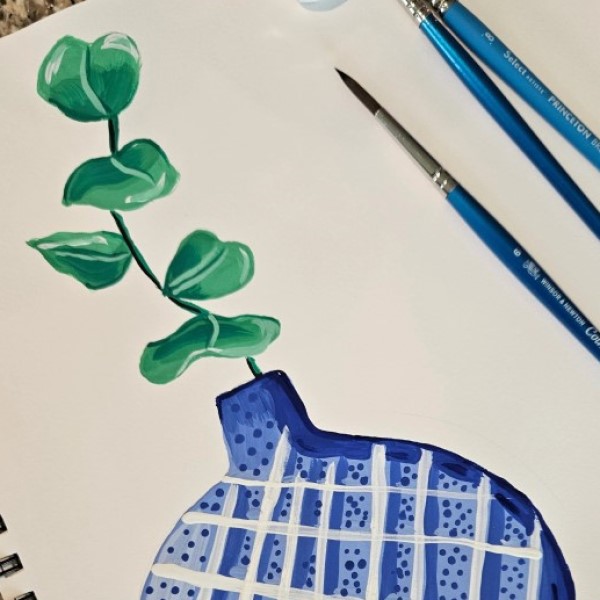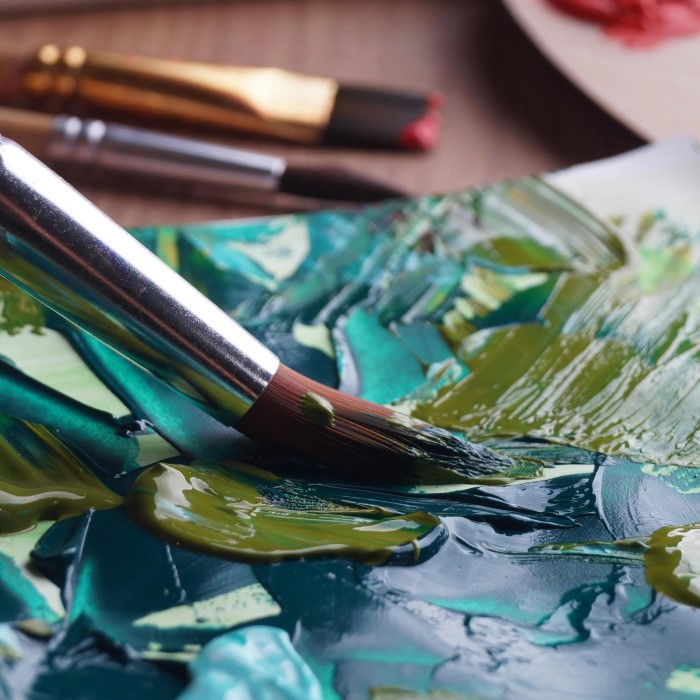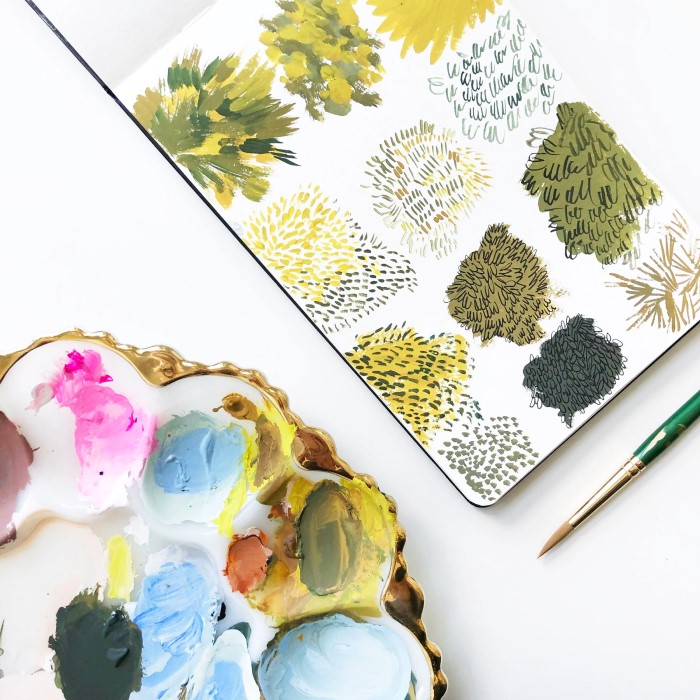Introduction
Welcome to the world of gouache paint! If you’re a beginner seeking to explore a vibrant medium that combines the qualities of both watercolor and acrylic, you’ve come to the right place. Gouache paint offers a unique texture, brilliant colors, and incredible versatility, making it an excellent choice for artists of any skill level. In this article, we will delve into the basics of gouache, provide essential tips, and inspire you to begin your creative journey.

What is Gouache Paint?
Gouache paint is a versatile medium loved by artists for its vibrant finish. It combines the characteristics of watercolor and acrylic, making it an excellent choice for art enthusiasts. Gouache is water-soluble, drying to a matte surface that can be reworked even after drying.
History and origins of gouache
Gouache has a rich history that dates back centuries. It originated in 18th-century Europe as an opaque watercolor, used primarily for illustrations and art prints. Early gouache was made with natural pigments mixed with gum Arabic and chalk. Artists found it effective for achieving bold colors and smooth coverage. Over time, its formula improved, making it popular for fine art and commercial applications.
Difference between gouache and other paints (watercolor, acrylic, oil)
Gouache shares similarities with watercolor but is more opaque. While watercolor appears transparent, gouache covers surfaces entirely, creating bold and solid textures. Unlike acrylic, gouache can be reactivated with water, making adjustments easier. In comparison to oil paint, gouache dries faster and doesn’t require solvents. Gouache bridges the gap between transparency and opacity, offering flexibility unmatched by other mediums.
Essential Supplies for Getting Started
Gearing up with the right supplies is crucial for enjoying gouache painting. Let’s explore the essentials you’ll need to start.
Types of gouache paints and brands
Gouache paint comes in two types: designer and artist-grade. Designer gouache is perfect for illustrations and graphic work. Artist-grade gouache is ideal for fine art due to its higher pigment quality. Popular brands include Winsor & Newton, Holbein, and Arteza. Winsor & Newton offers consistency and vibrant colors, great for beginners. Holbein is known for smooth application and richness. Arteza provides budget-friendly options for hobbyists.
Choosing the right brushes
Brush selection impacts your painting results. Opt for synthetic brushes for gouache, as they work best with water-based paints. Round brushes are versatile for blending and detailing. Flat brushes cover large areas and are great for bold strokes. Detail brushes are useful for intricate patterns and highlights. Brands like Princeton and Royal & Langnickel offer reliable options.

Suitable painting surfaces and tools
Gouache works well on thick paper, watercolor paper, or mixed media boards. Choose acid-free, heavy paper for durability. Smooth surfaces like hot press paper prevent absorption and help maintain vibrancy. Tools like palettes, water jars, and sponges are essential for mixing and cleaning. A proper palette allows controlled blending and easy access to paint colors. Keep paper towels handy for cleaning excess paint and drying brushes.
Techniques for Using Gouache Paint
Layering and blending techniques
Layering adds depth and dimension to gouache paintings. Start with thin, light layers first. Let each layer dry completely before adding the next. This avoids smudging and creates a smooth finish. Use a soft, synthetic brush for blending edges softly. Blending allows seamless transitions between colors. Dab a damp brush to soften lines and enhance continuity. Work quickly, as gouache dries fast, ensuring your brush remains moist.
Dry brush vs. wet techniques
Dry brush and wet techniques offer different effects. Use minimal water, keeping the brush semi-dry for this method. It’s great for details like grasses or fabric. Wet techniques involve more water for fluid, smooth strokes. Wet-on-wet allows colors to bleed for soft effects. Wet-on-dry provides sharp contrasts and controlled edges. Experiment with both to find your preferred style.
Creating textures and effects
Gouache is ideal for exploring textures and effects. Use sponges to dab paint for interesting patterns. Try splattering paint with a stiff brush for dynamic accents. Add water to mimic watercolor textures on your surface. Use cross-hatching or stippling for intricate designs and layers. Combine techniques to produce creative results and unique finishes. Play with tools like palette knives for more dramatic impacts. Always test techniques on scrap paper before applying to your main work.
Tips for Beginners
Mixing colors effectively
Learning to mix colors helps create vibrant, unique shades in gouache painting. Start with a basic palette of primary colors—red, blue, and yellow. Add white and black to adjust tones and shades. Use a clean palette for mixing to avoid muddy colors. Mix small amounts first to test color combinations. Gradually add water to maintain a creamy consistency. Keep paper scraps nearby to test new mixtures before applying to your work.
Maintaining consistency and opacity
Getting the right consistency is key to using gouache paint effectively. Aim for a creamy texture—not too thin or thick. If the paint feels too thick, add water in tiny amounts. For opacity, adjust the water-to-paint ratio. Less water creates bolder, opaque strokes. To maintain even coverage, use smooth brushstrokes and let layers dry before adding more. Avoid overloading your brush to prevent streaks or uneven textures.
Common mistakes and how to avoid them
Beginners often use too much water, which causes streaky or diluted results. Avoid this by starting with a small amount of water. Another common issue is overworking a section. Let layers dry fully before adding details or adjustments. Skipping proper cleaning of brushes can lead to muddy colors. Rinse brushes thoroughly during use and clean them after painting. Lastly, leaving paint uncovered can dry it out. Cover your palette or use airtight containers for storage to maintain paint quality.
How to Take Care of Your Gouache Paint and Tools
Proper care ensures your gouache paint and tools last long and perform well. Let’s explore key tips.

Storing gouache paints properly
Storing gouache paints correctly helps preserve their quality. Keep paint tubes secured with caps tightly closed. Store them in a cool, dry place away from direct sunlight. Use airtight containers for leftover mixed paints to prevent drying out. Avoid extreme temperatures, as heat can alter consistency. Regularly check for dried caps and clean them to ensure easy use.
Cleaning brushes after use
Clean brushes immediately after painting to maintain their condition. Rinse brushes under lukewarm water to remove excess paint. Use gentle soap or brush cleaner for thorough cleaning. Avoid harsh scrubbing that damages bristles. Shape the bristles back into place before drying. Lay brushes flat to dry or hang with bristles facing down. Never leave brushes sitting in water to protect the handle and ferule. Regular care keeps brushes effective for future gouache sessions.
Gouache Painting Inspiration and Ideas
Looking for creative ideas to fuel your gouache painting journey? Let’s explore some inspirations.
Popular subjects for gouache painting
Gouache paint works beautifully across a variety of subjects. Start with landscapes, capturing vibrant skies and lush forests. Cityscapes are also popular, showcasing colorful buildings and lively streets. Floral compositions allow for experimenting with delicate textures and bright colors. Portraits are a timeless choice for refining details and tones. Animals, whether pets or wildlife, provide opportunities for dynamic brushwork and textures.
If you’re drawn to abstracts, gouache is ideal for bold shapes and layered designs. Still-life setups like fruits, ceramics, and everyday objects are perfect for practicing shading and depth.
Exploring styles and themes
Gouache: Versatility in Artistic Styles
- Gouache is a highly versatile medium that can adapt to a wide range of artistic styles, making it a favorite among both novice and experienced artists.
- Impressionism: Try using gouache to create impressionistic works that capture the essence of light and atmosphere. Focus on applying vibrant colors in loose, expressive brush strokes to evoke a sense of movement and texture. This style allows for the exploration of how light interacts with the subject, resulting in works that feel alive and dynamic.
- Realism: For those interested in realism, gouache can be utilized to emphasize intricate details and maintain accuracy throughout the artwork. Pay close attention to the natural colors, textures, and forms, ensuring that your work closely resembles the subjects you portray. This approach can be rewarding as it challenges your observational skills and technical abilities.
- Minimalism: If you lean towards minimalism, gouache can help you achieve clean shapes and a limited color palette. This approach allows you to focus on the essence of your subjects by stripping away unnecessary details, creating a serene and impactful visual effect that communicates a clear message.
- Expressive Art: For artists who prefer a more expressive style, gouache can facilitate the use of bold strokes and striking contrasts. By utilizing intense colors and dramatic compositions, you can convey strong emotions, making your artwork resonate deeply with viewers. This style encourages a passionate expression that can be both liberating and cathartic.
Thematic Approaches to Enhance Your Work
- Thematic approaches can infuse your artwork with unique flair, inviting viewers to connect with your work on a deeper level.
- Nature Themes: Nature has always been a captivating theme in art, and it offers endless possibilities for exploration. You can create seasonal scenes that reflect the beauty of changing landscapes or delve into underwater worlds, illustrating the diversity of marine life. Incorporating elements of nature not only enhances visual aesthetics but also allows for a sense of tranquility and connection to the environment.
- Adventure Themes: Adventure themes, such as travel-inspired landmarks, provide opportunities for exciting storytelling through your art. Bring to life iconic places you have visited or dream of exploring, capturing the spirit of adventure and discovery. Use gouache to depict the vibrant energy of bustling cityscapes or the serene beauty of remote destinations, inviting viewers to experience your journey alongside you.
- Fantasy Themes: If you want to unleash creativity, consider exploring fantasy themes that allow you to create imagined worlds and characters. This genre provides the freedom to develop unique narratives and whimsical aesthetics, enabling a limitless expression of your imagination. Use bold colors and fantastical designs to craft enchanting visuals that captivate and inspire wonder.
- Cultural Themes: Lastly, cultural themes can significantly enrich your artwork by drawing inspiration from traditional patterns, ceremonies, or local landscapes. This approach not only celebrates the diversity of human experience but also honors the artistic heritage of different cultures. Consider incorporating elements that reflect your own background or that of a culture you admire, creating a meaningful dialogue within your pieces.
Find joy in personalizing your art by combining different styles and themes. Gouache thrives on versatility—there’s no limit to what you can create!
Frequently Asked Questions About Gouache Paint
Can gouache be reactivated after drying?
Yes, gouache paint can be reactivated after it has dried. This is one of its standout features. Simply add a small amount of water using a brush or spray bottle. The water softens the dried paint, making it workable again. This property makes gouache forgiving for adjustments and layering. Unlike acrylics, which permanently dry, gouache gives artists room for flexibility in their creations.
Is gouache suitable for beginners?
Gouache is highly suitable for beginners. Its water-soluble nature allows easy corrections and experimentation. Since it dries to a matte, opaque finish, small mistakes can be painted over effortlessly. With a manageable range of tools like synthetic brushes and thick paper, it’s accessible to newcomers. Gouache blends the ease of watercolor with the boldness of acrylic, striking a perfect balance for learning basic techniques and exploring creativity.
How does gouache compare in cost to other types of paint?
Gouache is relatively affordable, sitting between watercolors and acrylics in price. Artist-grade gouache costs more, offering higher pigment quality. Designer-grade gouache is budget-friendly and sufficient for beginners or hobbyists. Compared to oil paints, which require expensive solvents, gouache is cost-effective. Additionally, because gouache is reusable and lasts long, it’s a practical choice for artists at any level. For affordability and versatility, gouache is an excellent investment.
Conclusion: Start Your Creative Journey with Gouache
In conclusion, gouache paint offers a wonderful medium for both novice and experienced artists. By exploring its many qualities, techniques, and tips, you can develop your skills and find your unique style. Whether you’re painting landscapes, portraits, or abstract designs, gouache provides endless creative possibilities.
Don’t hesitate to experiment as you embark on your artistic journey. Remember that every artist started as a beginner, and practice will only improve your abilities. As you uncover the potential of gouache, you’ll discover a passion for painting that will enrich your creative life. So gather your supplies, let your imagination run wild, and enjoy creating beautiful art with gouache!

